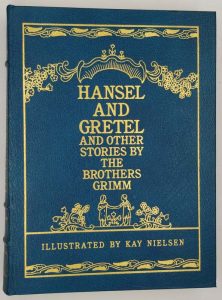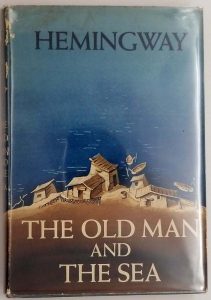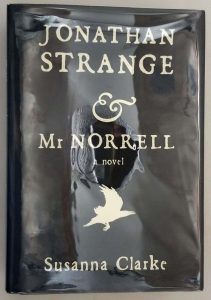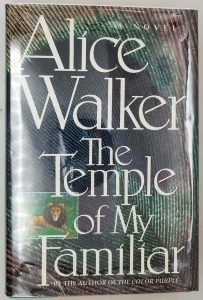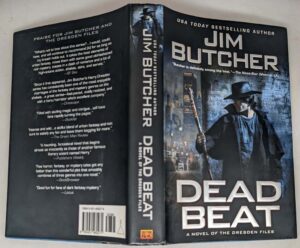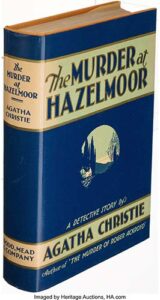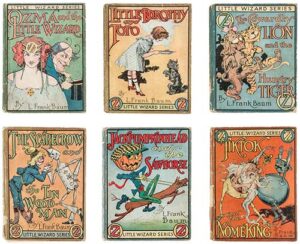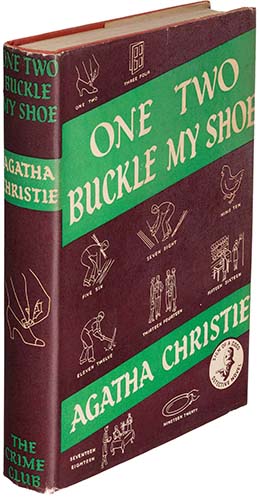
One, Two, Buckle My Shoe is a work of detective fiction by Agatha Christie first published in the United Kingdom by the Collins Crime Club in November 1940, and in the US by Dodd, Mead and Company in February 1941 under the title of The Patriotic Murders. A paperback edition in the US by Dell books in 1953 changed the title again to An Overdose of Death. The UK edition retailed at seven shillings and sixpence (7/6) while the United States edition retailed at $2.00.
The novel features both the Belgian detective Hercule Poirot, and Chief Inspector Japp. This is Japp’s final novel appearance. Soon after he visits his dentist, Poirot is investigating the death of his dentist. More people are dead, and the investigation widens, as Poirot slowly finds his way to the true stories behind the murders.
This is the first of the Poirot novels to reflect the pervasive gloom of the Second World War, and is one of Christie’s most overtly political novels. Frank Carter is a fascist and Howard Raikes a leftist. Mr Barnes discusses the main political forces freely with Poirot. Blunt’s credentials as a champion of political and financial stability are made clear in the text. Nevertheless, given the choice between setting free a blasé triple murderer and allowing an innocent man, set up by the guilty man, to be hanged, Poirot saves Carter and lets Blunt and Gerda be arrested.
The book’s UK title is derived from a well-known children’s nursery rhyme of the same name, and the chapters each correspond to a line of that rhyme. Other Agatha Christie books and short stories also share this naming convention, such as Hickory Dickory Dock, A Pocket Full of Rye, Five Little Pigs, How Does Your Garden Grow? and – most famously – And Then There Were None.
Plot Summary
[SPOILER ALERT]
Hercule Poirot is happy after his appointment with his dentist Henry Morley. He encounters former actress Mabelle Sainsbury Seale as she exits a cab outside the office. Poirot retrieves a shiny buckle for her that has fallen from her new shoe. During the dental visit, Morley tells Poirot that his secretary is away and her absence is slowing him in seeing patients. Later that day, his friend Inspector Japp informs him that Morley has been found dead, having been shot in the head, the gun in his hand. Between Poirot’s appointment and Morley’s death, the dentist had three patients – Mabelle, prominent banker Alistair Blunt, and a new patient, a Greek gentleman called Amberiotis. A fourth person, Howard Raikes, leaves without seeing Reilly. Raikes is an American left-wing activist who likes Jane Olivera, niece of the banker Blunt.
Amberiotis dies from an overdose of anaesthetic before Japp can interview him, leading police to the view that Morley accidentally killed him and committed suicide upon realising his mistake. Poirot does not accept this view. He knows from Morley’s secretary Gladys Nevill that she had been called away by a fake telegram that day. Morley had not liked her boyfriend Frank Carter, and felt Carter did this.
Mabelle is missing after speaking with police. A month later, search turns up a body, whose face is smashed in, within a chest in the apartment of Mrs Albert Chapman, a woman who cannot be found. Poirot notes the dullness of the buckled shoes on the body, clothes like Mabelle’s. Dental records reveal the body to be that of Mrs Chapman.
Blunt invites Poirot to his country house, where he meets Blunt’s cousin and niece. Two attempts are made on Blunt’s life; the second is thwarted by Raikes. The culprit is Carter, an assistant gardener at the house. Raikes finds Carter holding a gun, of the same make as the gun that killed Morley.
Agnes Fletcher, Morley’s maid, tells Poirot that she saw Carter on the stairs to the dentist’s office before Morley’s death. Poirot presses Carter, now held by police, for the truth. Carter admits that while waiting to speak to Morley, he saw two men leave his office. When Carter enters the office, Morley is dead, his body cold. Carter fears that no one will believe him.
Poirot meets with Blunt and presents him with the complex truths now clear to Poirot, and listens to Blunt’s explanations. The Scottish second cousin Helen Montressor is Blunt’s first wife Gerda, whom he had married in secret. Blunt’s second cousin of that name had died years earlier. He met Mabelle as an actress in the same company as Gerda in London. He had not divorced Gerda before he married his now-deceased and socially appropriate second wife, Rebecca Arnholt. If his bigamy were exposed, he would be disgraced, lose the fortune he inherited from Arnholt as well as the power he now has. When Mabelle recognises Blunt, she knows nothing of Blunt’s present life. Mabelle mentions seeing her friend’s husband to Amberiotis, whom she met by chance on her return to England. Amberiotis is a blackmailer and blackmails Blunt. Blunt then makes a plan to end the blackmail by murder.
Blunt and Gerda act jointly. The morning of the first two murders, Gerda invites Mabelle to an apartment she secured under the alias of Mrs Chapman. Gerda kills Mabelle by poison in her tea and briefly steals her identity at the dentist office. After Morley takes care of Blunt’s teeth, Blunt kills him. He and Gerda move Morley’s body to a side room, and he pretends to leave the office. Then Blunt acts as the dentist when Amberiotis arrives, injecting him with a fatal dose of anaesthetic. The secretary being out, Gerda changes Mabelle’s records to become those of Mrs Chapman and vice versa; the double confusion is meant to mislead the police on who was murdered in Chapman’s apartment. Gerda, as Mabelle, leaves. Once Amberiotis leaves, Blunt moves Morley’s body back into the surgery; the scene appearing as a suicide, he leaves. Amberiotis and Blunt are the two men Carter saw leaving the dental office. The telegram to Nevill was sent by the pair, not by Carter. Gerda wore new shoes when impersonating Mabelle, as she could not fit into Mabelle’s larger shoes after killing her. She put Mabelle’s own older shoes on her dead body, a detail that Poirot noticed.
Blunt is calm in discussing these details of murder and false identity with Poirot, as he expects Poirot to cover for him on account of his political importance; Poirot will not do this. Gerda was being arrested as they talked, and Blunt will be arrested, no matter his public role. The three people murdered deserve justice to their murderers. Poirot meets Raikes and Olivera and tells them to enjoy their life together, asking that they allow freedom and pity within it.
Publication history
- 1940, Collins Crime Club (London), November 1940, Hardback, 256 p.
- 1941, Dodd Mead and Company (New York), February 1941, Hardback, 240 p. as The Patriotic Murders
- 1944, Pocket Books (New York), Paperback (Pocket number 249)
- 1956, Pan Books, Paperback, 192 p. (Pan number 380)
- 1959, Fontana Books (Imprint of HarperCollins), Paperback, 191 p.
The book was first serialised in the US in Collier’s Weekly in nine parts from 3 August (vol. 106, no 5) to 28 September 1940 (vol. 106, no. 13) under the title The Patriotic Murders with illustrations by Mario Cooper.
One, Two, Buckle My Shoe – First Edition Book Identification Guide
The books are listed in the order of publication. While the majority of Agatha Christie’s books were first published in the UK. There are many titles that were first published in the US. The title of the book may differs from the UK edition in some cases.
| Year | Title | Publisher | First edition/printing identification points |
|---|---|---|---|
| 1940 | One, Two, Buckle My Shoe | William Collins & Sons, London, [1940] | First edition. "1940" on single line stated on the copyright page. No statement of later printings. Orange cloth lettered in black. Price 7/6. |
| 1941 | The Patriotic Murders | Dodd, Mead & Co, NY, 1941 | First American edition. Date on the title & copyright page matches. No statement of later printings. Red cloth lettered in black. Price 7/6. |
Note about Book Club Editions (BCE) and reprints:
UK: You can see statements of later reprint dates or of book club on the copyright page.
US: The US reprint publishers usually use the same sheets as the first edition and are harder to identify by looking at the title page or the copyright page. One may identify a BCE by looking at the DJ, which doesn’t have a price on top of the front flap and a “Book Club Edition” imprint at the bottom. If the dust jacked is clipped at both the top/bottom of the front flap. You can safely assume it’s a BCE . If the book is missing the dust jacket. Later BCE editions can be identified by its plain boards, while first printings are issued in quarter cloth.
Please refer to the gallery for detailed images of true first edition bindings and dust jackets.
One, Two, Buckle My Shoe – First Edition Dust Jacket Identification Guide
First edition bindings and various dust jacket printings identification.
